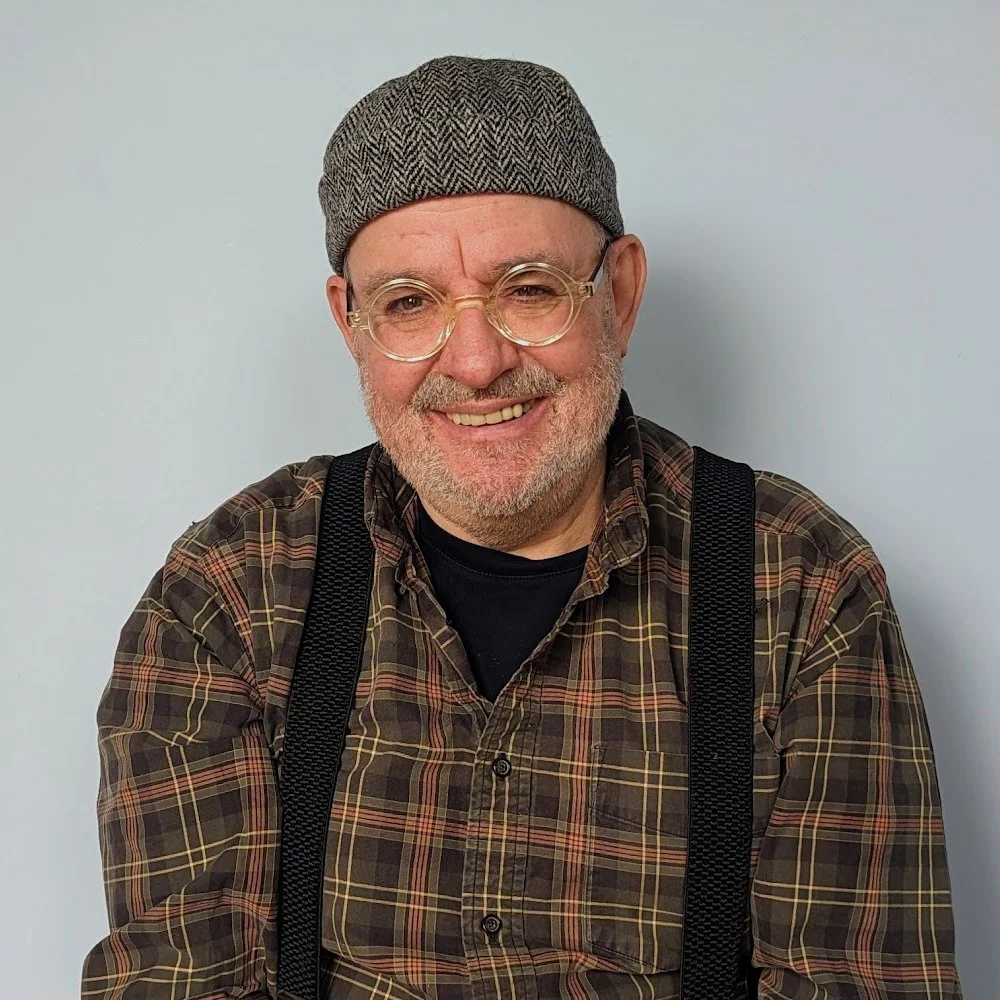Some of the shortlisted authors, along with presenter, Helen Mort, share their thoughts on the evening…
Iain Peters on stage at the event
Iain Peters, 2025 Winner
Eleven years ago, I walked into a police station holding a sheet of paper detailing a crime inflicted on me 60 years previously. I had absolutely no idea that it would become one of the central chapters of a life story that would lead to me standing on a stage with five extremely talented authors shortlisted for one of the most prestigious prizes in mountain literature. After each of us had been interviewed by Helen Mort, a poet and previous winner, the Chair of the judges, Rehan Siddiqui stood up to congratulate us all and then made an announcement which literally knocked me off my chair; The Corridor was the winner of 42nd Boardman Tasker Award for Mountain Literature! A fortnight on and I still am having to pinch myself!
Iain
Helen Mort on stage at the event
Helen Mort, Interviewer & BT Trustee:
Interviewing the shortlisted authors for the Boardman Tasker award on stage always gives me a buzz. Like the writers, I don't know the outcome until it is announced at the end! There's a sense of anticipation and tension as well as celebration. This year, the experience was also profoundly moving: several of the books examined how painful life experiences were transformed by time spent in the mountains. It was humbling to hear the writers read from their work, knowing what goes into the craft of distilling a book. The legacy of Pete Boardman and Joe Tasker certainly lives on. This year also saw a notable first: a four-legged friend on stage! Scout the mountain rescue dog acquitted himself with great dignity and stole the show (and our hearts). He left with a stash of biscuits kindly donated by Janet. There's always something to delight and surprise at the BT awards. Congratulations to the judges on selecting such a great list, I look forward (hopefully) to many more years of this special prize.
Helen
Mark Agnew on stage at the event
Mark Agnew, Shortlisted Author of There Will be Headwinds:
I could hardly believe my book had made the shortlist - the announcement had a tangible impact on my career as a corporate speaker, as it gave me credibility as a storyteller. What was most wonderful was the camaraderie among the other shortlisted authors during the award event. We had all had a great time getting to know each other and discussing our stories. It was an incredibly rich and rewarding evening. I wondered if I'd feel nervous or expectant as the winner was announced, but I didn't - I realised I had no idea who would win and no expectation either way. Anyone could have won. In the end, when the winner was announced, it was clear the right author won. Iain Peters was beside himself with joy and it was great to see. I had considered sending in a video, rather than attending in person, because I'd recently had a kid. I'm really glad I made the effort to come. The awards and the broader Kendal event were amazing. Some of the other authors and I ended up in the pub and my only regret is I couldn't stay longer.
Mark
Paul Besley on stage with Helen Mort for the event, along with mountain rescue dog Scout
Paul Besley, Shortlisted Author of The Search (& Scout):
I was taught to always say thank you.
So, thank you . . .
to everyone involved with the Boardman Tasker Award.
It was such a wonderful experience for myself, Alison, Olly and of course Scout. He loved all the attention and the special award, that was a real treat.
The evening was very special for us. I'm told I don't have much longer to live. We are fine with that news; it is not unexpected. When we were told about the asbestosis we decided to LIVE and that has brought great freedom for Alison and I. The award evening was like the cherry on the cake, a fine way to exit with the applause of my peers. It was an emotional evening, lots of people wanting to talk and take photos, sometimes to me, but mostly of Scout. What the judges did was acknowledge our contribution and the craft of writing. I could not have asked for anything more.
I've been walking the hills for fifty years, and now I walk them in my mind and cherish how fortunate I have been in life. To have Alison with me, Scout, Olly and all the other dogs now gone, and the hills. Wainwright was wrong. The best way to be in the hills is on your own but with a dog. Each time I went on a walk, there was a moment where a supreme contentment fell up on my soul. It was a physical act and an emotional moment. I was able in some small way to put that into words to help people have similar experiences. There is so much joy we found in helping people, and later in helping others in distress and need.
I read Joe and Peter's words a long time ago and knew I could never achieve their physical success; I lacked the courage, the ground always seemed so attractive. (I watched Helen some years ago run up the Buck Stone and marvelled at her courage and skill.) But I knew if I worked hard each day I could perhaps write like Pete and Joe, maybe not as good, after all they were masters. But if I could put something of myself and the landscape on the page, as they did, I would have done well. I think the evening confirmed for me that I may have been successful in that.
Thank you. You all made a difference.
Take care and good luck.
Paul, Scout, Alison, and Olly.






























